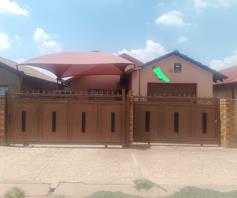"As South Africa's urban landscape is relatively young, there are fewer architectural styles on the residential offering than, say, in Europe," says RE/MAX of Southern Africa Operation Director, Ronan McCool. Many of the styles we see today are twentieth century and, more recently, modern homes have borrowed from period details to add mood and theme to residential developments.
Avoid being a purist when seeking out a particular architectural style of home. Many houses have been altered over time and so a Victorian home might have a modern wing or (quite commonly) a flat-roofed extension on the back of the house to make room for indoor bathroom and toilet facilities. The key things to look at when ascertaining the style of a house would include interior and exterior wall surfaces, roofing materials, the shape, structure and the pitch of the roof. Are there specific columns, balustrades, paving or molding and where are the windows situated within the buildings. Here are some of the primary South African architectural styles:
Cape Dutch
Real Cape Dutch buildings are by now valuable monuments. Look for thick walls, stable doors, square multi-paned windows set low in the wall and often shuttered. Cape Dutch floors were originally made of cow dung and built up in layers over years. Today, Cape Dutch style is generally mimicked through green and white colour schemes, terracotta tiles, shuttered windows and gable details.
Cape Malay
Expert Malay builders heavily influenced South African building styles. Similar in general architecture to the Cape Dutch, Malay-influenced houses favour flat roofs and central courtyards flanked by block-like wings for bedrooms and kitchens.
Victorian
A busy building era throughout South Africa, Victorian style encompasses both 'servant'-cottage terrace houses and free-standing Victorian mansions. Victorians favoured high ceilings, generous doorways and sash windows. They also enjoyed decorative details such as pressed ceilings, embossed wallpaper, cornices, half-walled strip wood paneling and iron balustrading (or broekie lace). Corrugated iron verandahs and decorative balcony tiles were also popular.
Art Deco
Many early apartments were built during this era and both the houses and flats enjoyed block-like architecture with slightly rounded edges and chevron details. Art deco homes are characterized by parquet flooring and distinct mint green, candy pink or lemon yellow kitchen and bathroom tiles often flecked and bordered with black tile details. Balconies were recessed rather than being exterior protrusions and steel windows were favoured over the sash-style.
More modern styles include:
Cape Vernacular
This is a Victorian rendition of the Cape Dutch style, known as 'farmyard architecture'. As a style it lacks pretension and it also tries to respect the landscape in which it resides. This style of home has been heavily favoured on urban outskirts and popular weekend-home investment towns. Rough plaster walls are whitewashed and uneven doors and details are acceptable. Roofs are either corrugated iron or tile but are most authentic in thatch.
Tuscan
A hugely popular style for all levels of homes, the Tuscan style is best expressed in large double story, symmetrical homes. Often characterized by wavy terracotta roof tiles, garden water features, wrought iron details and double volume entrance halls; Tuscan homes also favour mustard coloured exterior paints and generous terracotta, marble and granite finishes.
Urban
As the inner-city revival takes hold, a lot of warehouse, loft or industrial apartment spaces are being created. Basically these homes result from the conversion of office or industrial spaces that are based in the central city but can no longer accommodate the demands of a modern business. Some of the buildings are rich in historical detail and are preserved as historical apartments but more commonly these urban spaces become loft apartments, with bedroom/bathroom and living/kitchen areas created over a split level. Loft apartments are best suited to a lock-up and go lifestyle but excellent views and proximity to the action makes for city living.
Whatever your preference, remember that what might just seem like a house can easily become home. Enjoy creating your architectural theme, or restoring your beautiful old home to its former glory.
For more information contact (021)417-5801 samantha.watson@cape.magna-carta.co.za
Readers' Comments
Have a comment or question about this article? Email us now..
What's your home worth?
Want to know what the average home price is in your area? Visit PropertySPI and get the latest report on transfers and price movements in your street, suburb or sectional title scheme.
Property News
Click here for more property news articles.







